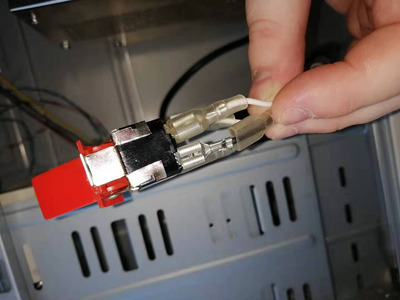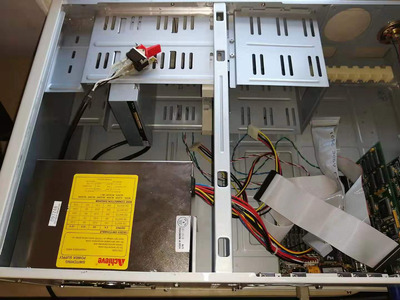First post, by AntiRevisionism
Hello guys. I recently got a full sized AT Power Supply from e-bay for my ridiculously oversized case for my 386
It's an Archive AL 250 watts. Listed as used, but the thing looks near-new.
Anyway, I installed the power supply in the case. I did not connected the on/off switch to the front of the case as I'm still doing work on other components.
The power supply worked, I turned the machine on and off several times while trying to resolve floppy detection issues. The on/off switch I have just laying on it's side on top of the 5.25 internal bays (see photo)
After deciding to try a different floppy drive, I take out the old and hook one up.
Still no dice on detection so i figure it's the controller card. I go to turn off the machine by the on/off switch and ouch.... I get a nasty electric shock... could feel it pulsate through my finger if though it was only for a split second.
I immediately killed power by the surge protector and removed the power cable from the power supply and have not turned the unit back on since.
Upon checking things out this morning, I noticed that on the switch some of protective plastic on one of the wires had fallen down quite a ways (see the photo).
I am wondering now - am I looking at a potentially bad power supply? Or is the issue likely with the switch wire becoming exposed (and maybe also how I had it resting on the case internals)?

